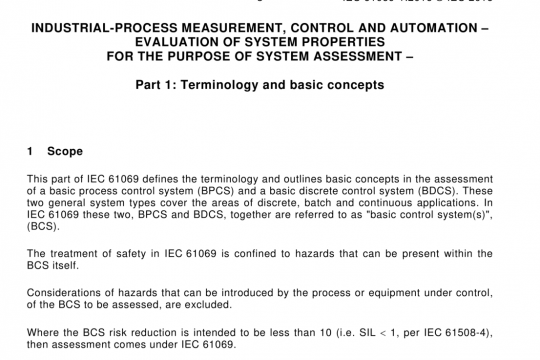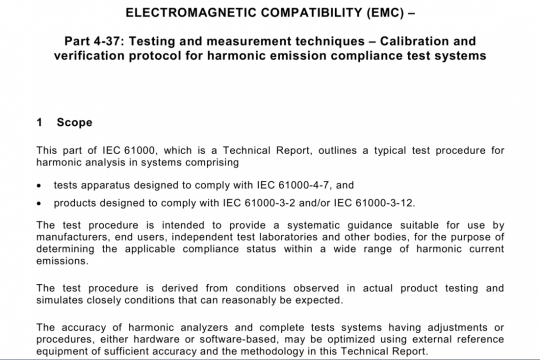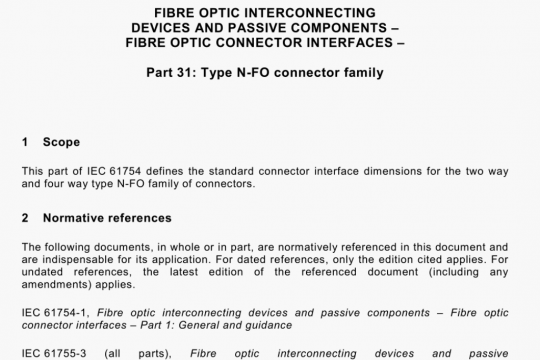IEC 60404-13 pdf free download
IEC 60404-13 pdf free download.Magnetic materials – Part 13: Methods of measurement of resistivity, density and stacking factor of electrical steel strip and sheet.
4 Determination of the resistivity
4.1 General
Two methods for the determination of the resistivity of a test specimen are described in this document; Method Ri using an Epstein strip specimen, and Method R2 using a rectangular sheet specimen.
NOTE Method R2 is based on the van-der-Pauw (VDP) method [1]1 which is based on the theory of conformal mapping of two-dimensional fields. For a body of uniform thickness and arbitrary shape, an exact mathematical formula exists for the resistivity determined from the voltage to current ratio obtained using four contacts. The formula is simplified when specimens and contact positions are highly symmetrical. Method R2 is particularly appropriate for rectangular sheet specimens.
The method of determination of the resistivity p, based on the measurement of the geometric dimensions of the test specimen including the thickness, can be applied to all types of material specimens. However, the method for further use to determine the density Pm in accordance with 5.2 is restricted to the materials as specified in 5.1.
4.2 Principles of measurement
4.2.1 Method of determining p for an Epstein strip specimen (Method Ri)
The circuit for the measurement of the resistance of an Epstein strip specimen shall be connected as shown in Figure 1. Two electrical contacts A and B shall be arranged on either end of the shorter sides of the test specimen to supply a homogeneous current through the test specimen in the longitudinal direction. Two electrical contacts, C and D, located inside the contacts A and B shall be arranged on a longer side edge of the test specimen to measure the voltage over the length ‘e It is not necessary to remove the oxide layer or other insulating coatings because the contacts are made at the cut edges of the specimen.
4.4 Apparatus
4.4.1 Common requirements for Method Ri and Method R2
The following equipment is required:
— according to 4.2.3.2, a calibrated balance, capable of weighing the mass of the test specimen to within ± 0,1 %;
— a power supply consisting of a stable low voltage DC current source capable of supplying a current of the order 1 A to 10 A (unless a four-terminal ohm meter is used, as specified in 4.5.2 and 4.5.3);
— a resistance measuring device (e.g. ammeter and voltmeter of accuracy ± 0,1 % or better, or a Kelvin bridge or a four-terminal ohm meter of corresponding accuracy) capable of measuring the resistance R of the test specimen to within ± 1 %;
— a jig for making contact with the test specimen (as specified in 4.4.2 and 4.4.3) and, between the contacts, a supporting flat plate smaller than the test specimen (on sides where contacts are arranged) but not by more than 5 mm (10 mm for rectangular sheet specimens) on each side. The thickness of the support shall allow the contacts to touch the specimen lying on the support.
4.4.2 RequIrements for Method Ri
The apparatus for making electrical contact with the strip specimen employs four contacts:
two voltage contacts (tips) are mounted on a removable bridge and two current contacts are fixed to the base plate. The four contacts shall be arranged so that the two voltage contacts C and D lie on a longer edge of the strip between the current contacts A and B (see Figure 1). The current contacts shall be arranged symmetrically in the centre of each of the shorter edges of the strip within ± 0,5 mm. The two voltage contacts shall have a relatively sharp edge (e.g. with a radius of curvature of 1 mm). The distance ‘e between the voltage contacts C and D shall exceed 200 mm. The minimum distance between the voltage contacts and the current contacts shall be not less than the width of the test specimen (the distance ‘e between the tips shall be determined within ± 0,5 mm, see Figure 1).IEC 60404-13 pdf download.




